The NTSB’s final report on Hawaiian Airlines Flight 35 turbulence is out, and it’s a wake-up call for Hawaii travel. Injuries to dozens of passengers and crew were caused by a split-second decision error. With abounding turbulence risks in Hawaii’s quickly changeable skies, this report highlights critical lessons for all, and especially passengers.
Hawaiian Airlines Flight 35, encountered severe turbulence near Kahului (Maui) in December 2022. At the forefront of the findings is a striking admission: the pilots acknowledged they should have “gone around” the weather cell and the plume that shot up in front of them, which resulted in dozens of injuries aboard the flight. This pivotal decision—or lack of it—played a central role in the turbulence event that left 36 people injured, 20 of whom went to the hospital.
The NTSB says that the cockpit voice recorder captured the pilots’ admission of error. This acknowledgment aligns with the NTSB’s conclusion that pilot error was the probable cause. According to today’s report, the pilots decided to fly over an observed storm cell despite sufficient meteorological information warning of potential severe weather along the flight path.
In addition, while it is now reported that the seat belt sign was on, cabin crew had not yet received a warning to take their seats when the turbulence struck suddenly. Only the lead flight attendant was aware of the circumstances and was just in the process of notifying the remaining cabin crew when the violent turbulence occurred.
Turbulence hit without warning.
The Airbus A330-200 was nearing Hawaii when a vertical weather “plume” appeared directly in front of the aircraft. Despite prior NOAA warnings regarding unstable atmospheric conditions and the potential for turbulence, the pilots chose to proceed rather than deviate around the plume. Seconds later, the plane encountered severe turbulence, described by various passengers as a “hard jolt” and a “free fall” sensation.
Some passengers and crew members without seatbelts fastened were violently thrown into the ceiling and luggage compartments before crashing back down onto the floor, resulting in injuries ranging from head trauma to severe bruises. Loose carry-on items, including phones, garments, and beverage containers, were flung across the cabin as the plane lurched. One passenger reportedly struck the ceiling face-first before being hurled to the floor.
Injuries and aircraft damage.
The turbulence caused significant injuries to passengers and crew. Honolulu Emergency Medical Services reported head injuries, lacerations, and loss of consciousness among the victims, which included at least one infant.
The aircraft cabin also sustained damage, including dislodged ceiling panels and other fixtures. Despite the extent of the injuries and damage, cabin crew and passengers worked together to provide medical assistance to those in need.
NTSB said this could have been prevented.
The NTSB indicated that the incident was preventable. Before the flight departed, the crew was advised of potential turbulence and convective activity on approach to Hawaii. In addition, weather forecasts and data during the flight continued highlighting unstable atmospheric conditions near Hawaii. The pilots observed the storm cell forming but underestimated its severity, choosing to fly over it instead of going around.
The NTSB identified the probable cause of the event: “The flight crew’s decision to fly over an observed storm cell instead of deviating around it despite sufficient meteorological information.” While the seatbelt signs were illuminated, no specific announcement about the potential for turbulence was made, which the NTSB said could have reduced the number of injuries.
The report also highlighted: “Data from the airplane’s quick access recorder showed that the airplane experienced vertical accelerations greater than 2 Gs during the turbulence encounter.” Furthermore, the final report noted, “The CVR recorded the crewmembers stating, after the turbulence encounter, that they should have ‘gone around,’ indicating that sufficient time should have been available to deviate away from the plume.”
The NTSB underscored guidance from the flight crew operating manual, which recommended that crews “consider storm cells above 35,000 ft as highly hazardous” and avoid overflying cells with tops at or above 25,000 ft to prevent encountering “stronger than expected” turbulence. The decision to overfly the storm cell, contrary to this guidance, was a contributing factor in the severe turbulence encounter.
Hawaiian Airlines’ response to the NTSB report and our article.
“At Hawaiian Airlines safety is our top priority. We regularly train our crews on significant weather avoidance, including in-air turbulence. Following Flight 35, we conducted a thorough internal review and cooperated with the NTSB to understand the factors that led the aircraft to encounter stronger than anticipated and reported turbulence. We will continue to learn as much as we can from this event. We thank our employees for their professionalism and care for our guests on the flight.” — Alex Da Silva, Director External Communications.
Lessons for Hawaii flights.
Hawaii’s weather patterns, including the Kona storm responsible for this incident, are unique and can change quickly. As the aviation and travel industry absorbs the lessons from the NTSB report below, Hawaiian Airlines Flight 35 will remain in our minds as it has caused many of us to take the seatbelt sign with even more seriousness.
Report_DCA23LA096_106472_12_12_2024-8_56_39-PMGet Breaking Hawaii Travel News
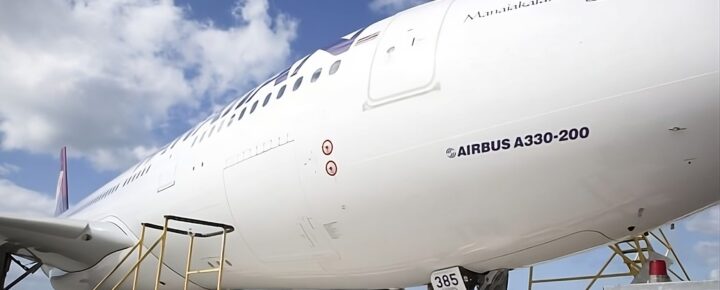
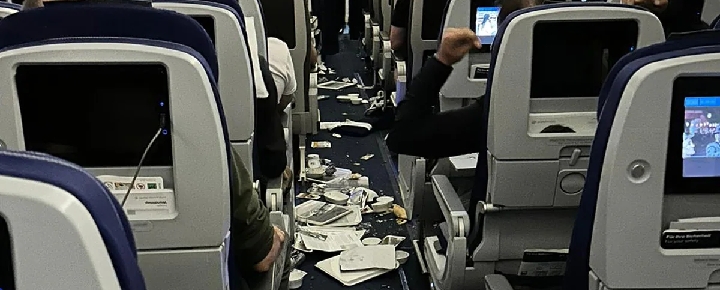
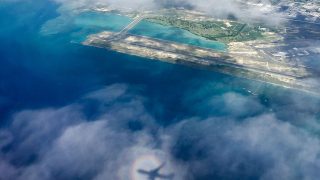
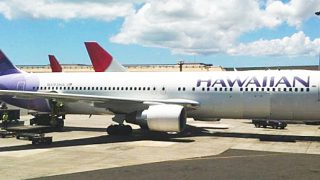
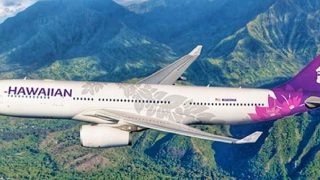
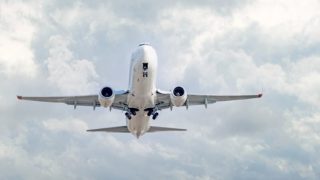
Dear BOH Editors,
Please stop printing the arguments between. Rob T and John W on this platform. It would be best to only show their initial comments and not their tit for tat “I know best”. I don’t believe they are necessary or informative. Half the time they are argueing about aviation technology and mechanics
lay people do not
understand and which airline is better.
We, your readers, read BOH articles and reviews done by you that we enjoy and that understandable and informative. We read the “sane” reader comments and opinions. Their opinions may differ, but they do not go after each other or try to prove who is more intelligent.
Many thanks for taking the time to read this and a reply to my email would be appreciated.
Fair point Yvonne! I felt the same thing and didn’t bother answering after it devolved into too much back and forth. My take is a simple point being made is good enough. People can make up their own minds and going back and forth can become pretty foolish. Personally I don’t take anything personal and enjoy hearing various perspectives. This is simply a blog and different perspectives are always interesting. Merry Christmas to you and Rob!
I was unable to read this article until today, so I
apologize for this late comment.
Unless you need to use the restroom, or you need to Briefly walk to stretch your legs or prevent blood blot clots, or have back pain, you should always have your seat belt on securely, or at the least snugly.
IMO if you choose not to wear one, You are responsible for Any turbulence-related injuries incurred during
a flight, even when it’s pilot error. The FAA and the DOT should make it a law.
Ooops…
Flying the same dull routes all the time can lull pilots into complacency. It takes just a few seconds for that inattention to turn deadly…
Best Regards
Pilot error. You don’t say?
Passengers should always wear seatbelts. People, please listen to the FA’s they don’t make announcements to just hear themselves talk. The crew injuries probably couldn’t be avoided but most of the passengers, if belted in, would be able to, not be hurt if buckled in!
This is discouraging to say the least. We get on that flight hoping everybody down the chain is doing their job properly. From mechanics to pilots. We put our lives in their hands. To learn that the pilots were warned but they chose to fly over the storm Cell anyway is beyond me.
The NTSB takes two years to conclude pilots flew in to storm clouds they were warned to avoid?
The US needs DOGE now or we are doomed.
And JW, think about this accident before you comment repeatedly that Hawaiian Air pilots are far superior in Hawaiian weather.
Just to be clear Rob, I’ve never disparaged any pilot group, every airline operating has incidents blamed as “pilot error” The SWA pilots are excellent at what they do and just as good as the Hawaiian. Alaska or any other pilot group. I have pointed out the fact that SWA operates inter island with far less resources for their pilots than HA does and of course they have less experience in Hawaii and the rare but occasional unique situations arise (Volcanoes, Kona winds etc).
That said, I’m careful to never blame pilots for the corporate decisions of their respective airlines.
OK John-
You state “of course they have less experience in Hawaii” as a reason that SWA pilots are inferior, but at the same time you claim not to disparage any SWA pilot group. Nonsense.
Are you OK with the NTSB taking two years for such a basic conclusion?
It’s surprising to read that the manual warned against flying over storm cells of this size. Why wasn’t that followed? I hope we learn more.
I’ve flown to Hawaii dozens of times, and turbulence is always a worry of mine. This report makes me think twice about always being prepared and leaving the darn seatbelt on.
So the consequences for the flight crew was exactly what? Maybe at least some remedial flight and simulator training for both of them along with daily reading of the aircraft operations manual for at least 6 months.
The got promoted. There is a saying in the aviation industry. Screw up, move up